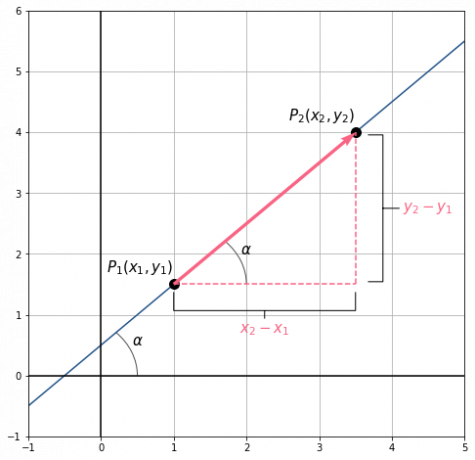O Governing Period was the period in the history of Brazil that began after the abdication of Dom Pedro I of the throne in favor of his son, Dom Pedro II.
This phase was marked by the presence of the regents in the administration of the country. Another important point of this phase was the political decentralization and the occurrence of several provincial rebellions.
Therefore, resolve the list of exercises about the Regency Period that the Escola Educação team selected for you!
List of exercises on the Regency Period
1 — According to _______________, Dom Pedro II could assume the throne of the country when he came of age.
a) Constitution of 1891
b) Constitution of 1824
c) Constitution of 1967
d) Constitution of 1988
2 — During the Regency Period, the provinces were governed by members of regional elites, composed of:
a) great intellectuals and landowners.
b) large entrepreneurs and landowners.
c) large traders and landowners.
d) large industrialists and landowners.
3 — Regional leaders were influenced by liberal doctrines and sought autonomy from the federal government. Therefore, they competed for power with central government politicians who defended:
a) the centralization of the republican system.
b) the centralization of the colony.
c) the centralization of provinces.
d) the centralization of government.
4 — What were the main political groups that existed during the Regency Period?
a) Restorers, Moderate Liberals and Exalted Liberals.
b) Restorers, Republican Liberals and Exalted Liberals.
c) Restorers, Moderate Liberals and Republican Liberals.
d) Republicans, Moderate Liberals and Exalted Liberals.
5 - It is correct to say that the Regency Period was one of the most unstable phases after the Independence of Brazil, for being a period characterized by disputes for central power, which ended up generating the instability of the Empire?
a) Yes, this was a phase marked by the occurrence of numerous regency rebellions aimed at, mainly, the improvement in the quality of life of the population that, even after independence, continued really bad.
b) Yes, this was a phase marked by the occurrence of numerous regency rebellions that were mainly responsible for the abolition of slavery.
c) No, because the Regency Period was the phase in the history of Brazil in which the country had the most political stability.
d) No, as the Regency Period was marked by political centralization, in which power was exercised by the emperor.
6 — Tick the alternative that contains the regency rebellions that took place during the Regency Period.
- Free Online Inclusive Education Course
- Free Online Toy Library and Learning Course
- Free Online Preschool Math Games Course
- Free Online Pedagogical Cultural Workshops Course
a) Revolt of the Malês; Cabaning; Sabinada; Balaiada; War of the Farrapos.
b) Revolt of the Malês; Cabaning; Sabinada; Balaiada; Mining Inconfidence.
c) Malês Revolt; Bahian Conjuration; Sabinada; Balaiada; War of the Farrapos.
d) Malês Revolt; Cabaning; Pernambuco Revolution; Balaiada; War of the Farrapos.
7 — The Regency Period was characterized by four different regency. What were they?
a) Provisional Three-year Regency; Permanent Triune Regency; Una Regency of Feijó; Una Regency of Araújo Souza.
b) Liberal Triune Regency; Permanent Triune Regency; Una Regency of Feijó; Una Regency of Araújo Lima.
c) Provisional Three-fold Regency; Moderate Triune Regency; Una Regency of Feijó; Una Regency of Araújo Lima.
d) Provisional Triune Regency; Permanent Triune Regency; Una Regency of Feijó; Una Regency of Araújo Lima.
8 — What were the main characteristics of the Regency Period?
a) Decentralization of power; government led by emperors; political disputes; three major political groups: restorers, moderate liberals, and passionate liberals; regency rebellions.
b) Decentralization of power; government led by regents; political disputes; three major political groups: restorers, moderate liberals, and passionate liberals; long periods of peace between the regency.
c) Decentralization of power; government led by regents; political disputes; three major political groups: restorers, moderate liberals, and passionate liberals; regency rebellions.
d) Political centralization; government led by regents; political disputes; three major political groups: restorers, moderate liberals, and passionate liberals; regency rebellions.
9 — (UEL-PR) “[…] the most popular armed movement in Brazil exploded in the province of Grão-Pará […]. It was one of the Brazilian rebellions in which the lower layers occupied power.”
The text can be associated with:
a) the Regency and the Cabanagem.
b) the First Reign and the Praieira.
c) the Second Reign and Farroupilha.
d) the Joanine Period and the Sabinada.
e) the abdication and the Noite das Garrafadas.
10 — (MACKENZIE) From a political point of view, we can consider the Regency Period as:
a) a politically troubled time, although without separatist struggles that compromised the unity of the country.
b) a period in which popular demands, such as the right to vote, the abolition of slavery and political decentralization, were largely met.
c) a transition to the republican regime that was installed in the country from 1840 onwards.
d) an extremely agitated phase with crises and revolts in several provinces, generated by the contradictions of the elites, middle class and popular strata.
e) a stage marked by political stability, since the opposition to Emperor Pedro I brought together the various social segments, facilitating alliances in the Regency.
Template
1 - B
2 — C
3 — D
4 - A
5 - B
6 — A
7 - D
8 — C
9 — A
10 - D
Click here and download the list of exercises about the Regency Period in PDF
Learn more at:
- List of exercises on the First Reign
- List of exercises on the Second Reign
- List of exercises on the Old Republic
The password has been sent to your email.

